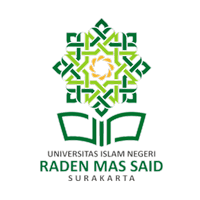Masjid Putra Malaysia: Embracing Globalization and Cultural Diversity through Inclusive Da'wah and Religious Tourism
Contributors
Mustajab
Keywords
Proceeding
Track
General Track
License
Copyright (c) 2025 International Conference on Cultures & Languages

This work is licensed under a Creative Commons Attribution-NonCommercial-NoDerivatives 4.0 International License.
Abstract
In a globalized landscape characterized by intense cultural interactions, Masjid Putra in Putrajaya, Malaysia, emerged as a model religious institution that blended Islamic values with an inclusive approach to promote cultural diversity and global harmony. The Putra Mosque Malaysia is a symbol of the unity between Islamic values, modern architecture, and inclusive social function. This study, based on an interview with Raja Aman Shah, tour guide and manager of Masjid Putra, along with direct field observation, explores its multifaceted role in fostering peace and humanitarian values. First, Masjid Putra plays a strategic role in peacebuilding and humanitarian response by facilitating interfaith dialogue, nurturing tolerance, and supporting initiatives grounded in Islamic principles of rahmah (compassion) and ta’awun (mutual help). Second, its modern facilities—including a library, Qur’an translation gallery in multiple languages, auditoriums, and social programs—strengthen da’wah, community empowerment, and coordination of humanitarian aid. By integrating wasatiyyah principles and modern technology, the mosque provides sustainable solutions for social reconciliation and crisis management. Third, the inclusive design of Masjid Putra, professional management, and community-based initiatives position it as a unique religious tourism destination. It attracts visitors globally—from Europe, Asia, Africa, and the Americas—many of whom are non-Muslims from countries such as Indonesia, Korea, China, Japan, France, and the United States. Regulations for non-Muslim tourists, including the wearing of robes and attending educational lectures, not only foster respect but have also led to conversions, with 33 visitors reportedly embracing Islam after their visit. Ultimately, Masjid Putra serves as a global model for integrating Islamic values with practical approaches to cultural diversity, reconciliation, and world peace, reinforcing Islam’s universal message of compassion, tolerance, and unity.

